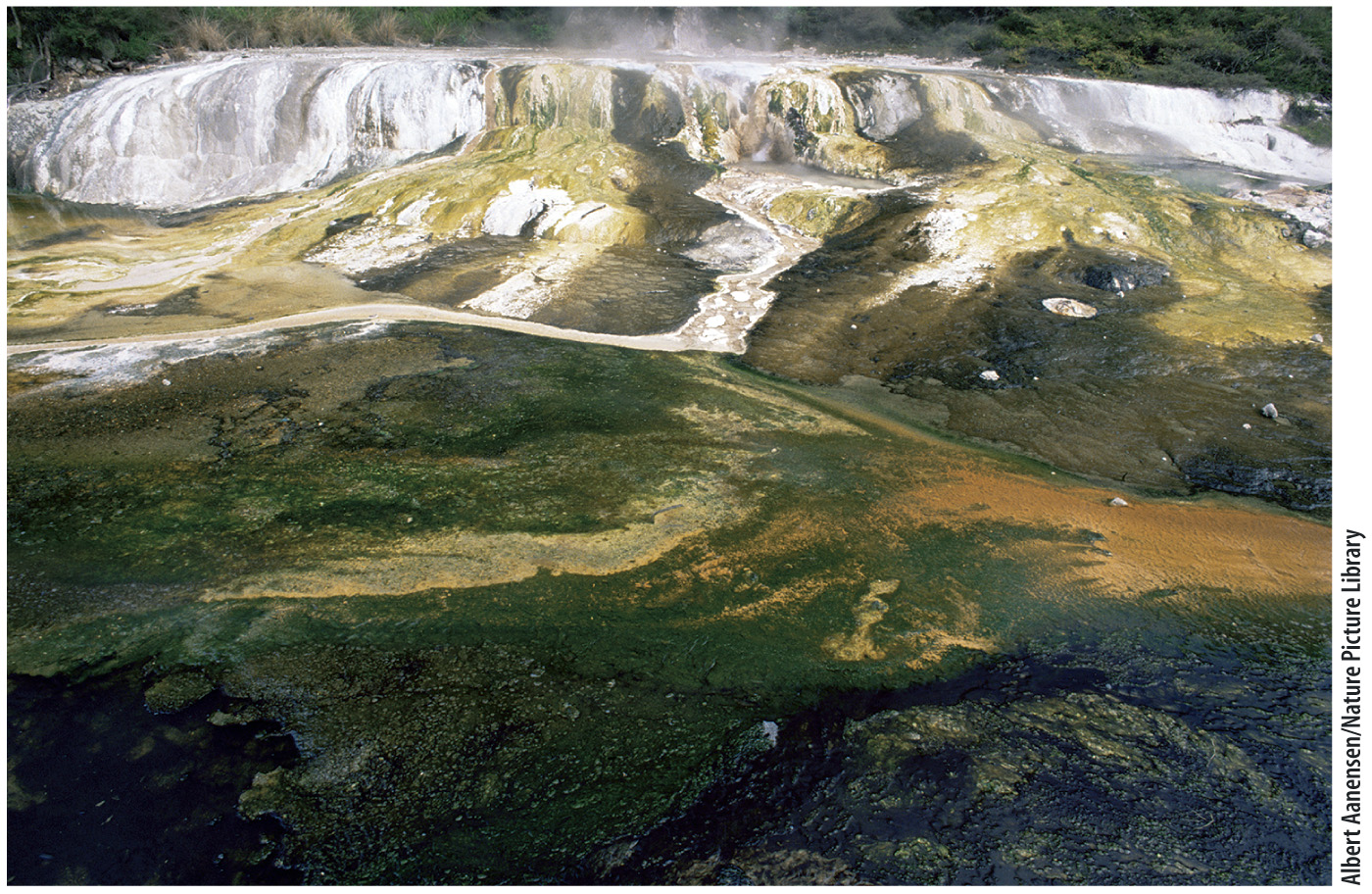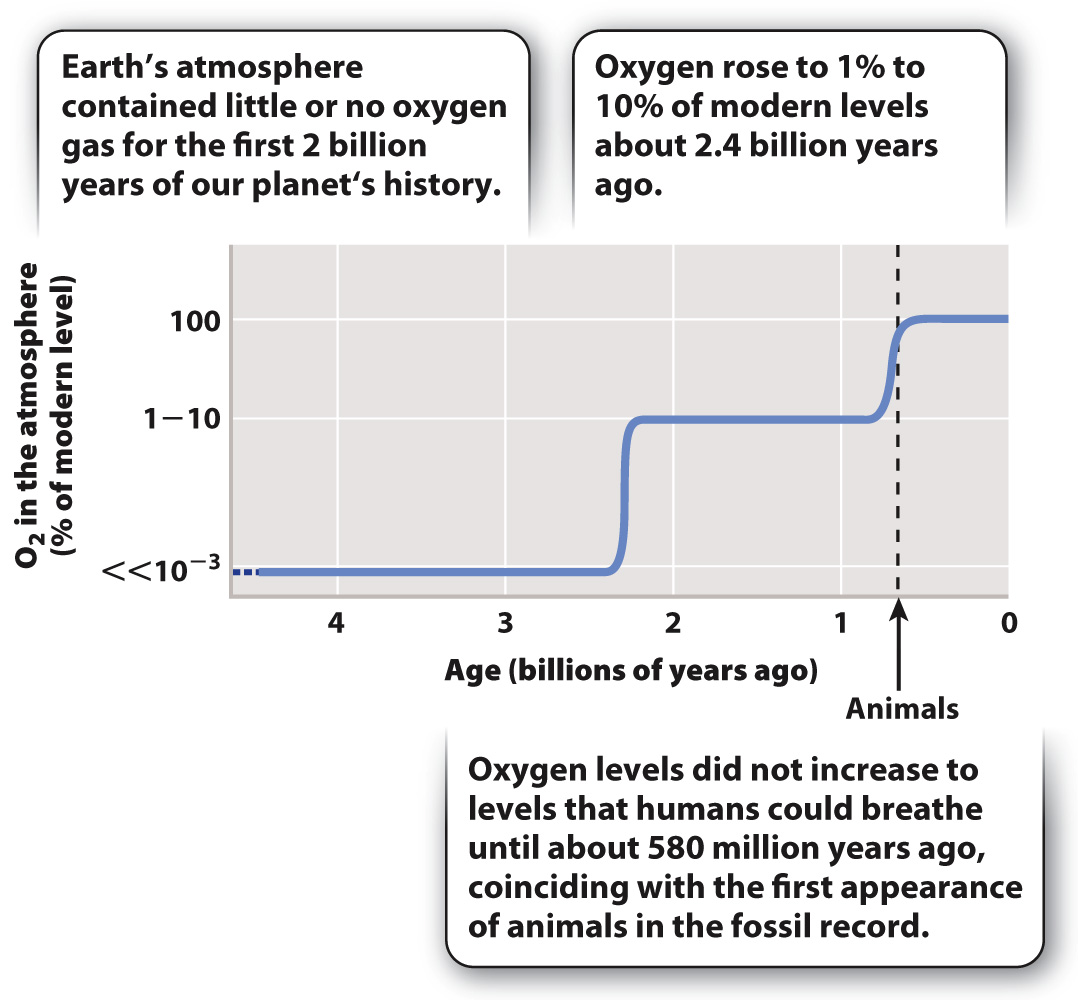The carbon cycle weaves together biological evolution and environmental change through Earth history.
The world did not always support the biological diversity we see today. Indeed, 2 billion years ago, the carbon cycle included mostly photosynthetic bacteria and microbial heterotrophs because there were no plants or animals (Fig. 25.13). Subsequently, algae gained an ecological foothold as nutrients such as nitrate became more widely available, and single-

523
The history of life is one of accumulating variety and complexity, based mostly on the great biological components of the carbon cycle: photosynthesis and respiration. Indeed, the carbon cycle did more than provide a framework for accumulating diversity; it changed the very nature of Earth’s surface environments in ways that enabled new types of organism to evolve.
When life began, the atmosphere and oceans contained little or no oxygen gas. How did our present environment come to be? The key lies in the formulas for photosynthesis and respiration, shown in Fig. 25.2. Photosynthesis and respiration not only cycle carbon, they cycle oxygen (and water) as well. For this reason, the history of atmospheric oxygen is closely tied to the workings of the carbon cycle through time. When oxygen production by photosynthesis and oxygen consumption by respiration are in balance, oxygen levels do not change. However, when some of the organic carbon generated by photosynthesis is buried in sediments, thereby avoiding being returned to the environment through respiration, some of the O2 also generated by primary producers can accumulate in the atmosphere and oceans. In other words, because sedimentary organic matter burial can break the tight coupling depicted in Fig. 25.2, it can facilitate an increase in O2 through time. The geologic history of oxygen shown in Fig. 25.14 results from the interactions through time between the carbon (and sulfur) cycle with plate tectonics. Our oxygen-

But life does not just respond passively to changing environments—
And, in the current century, a single animal species is influencing the carbon cycle in new ways. That species is us. As noted in our opening discussion of the Keeling curve, humans are adding CO2 to the atmosphere at a high rate, warming Earth’s surface by the greenhouse effect. The consequences of human activities for Earth and its living organisms are discussed more fully in Chapter 49. For now, just bear in mind that modern humans are not simply observers of the carbon cycle; we are major participants in it.
In the chapters that follow, we examine life’s diversity in terms of function, phylogeny, and ecology, but don’t be fooled into thinking that these are discrete topics: They are inextricably intertwined. The remarkable diversity of life on Earth reflects the ecology and evolution of populations that interact to cycle carbon through the biosphere.